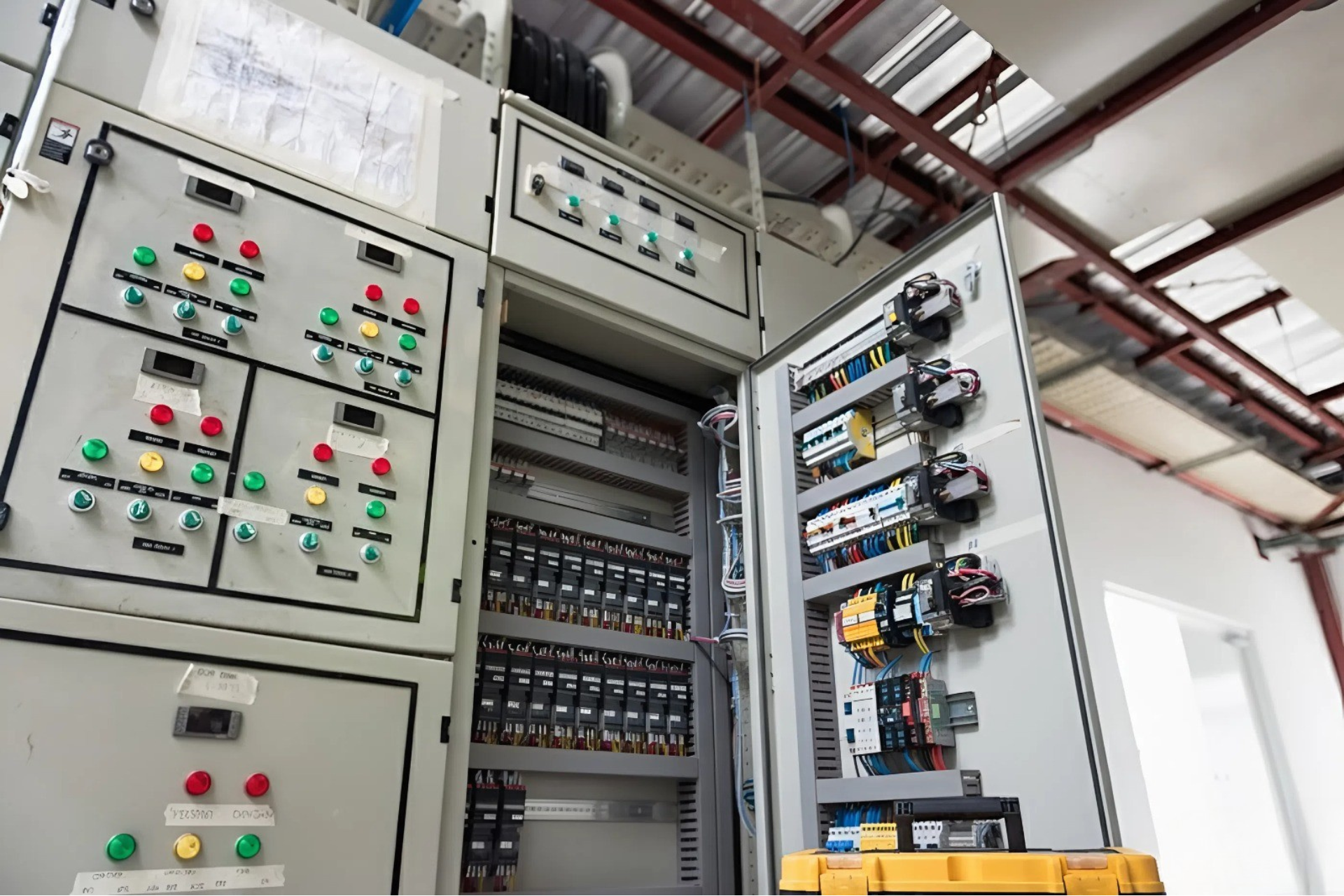
What is a super flat floor? The concrete pouring process for a super flat floor
In industrial factories, warehouses, logistics centers, and storage facilities, superflat floors are becoming a crucial standard for enhancing operational efficiency and minimizing maintenance costs. But what exactly is a superflat floor? What are its key characteristics? And how can concrete flooring be poured to achieve optimal flatness? Through this article, TECO will help you gain a deeper understanding of superflat floors and the construction process required to ensure the best quality.
What is a Superflat Floor?
A superflat floor is a type of concrete floor that is constructed with a higher level of flatness and smoothness than standard floors. This type of flooring was developed to meet the stringent requirements of warehousing, manufacturing, and automation systems. It helps minimize deviations in the operation of mechanical equipment such as forklifts, automated guided vehicles (AGVs), production lines, and high-rack storage systems. Specifically, superflat floors reduce forklift vibrations, allowing vehicles to move at higher speeds without affecting goods and machinery.
Common applications of superflat floors include:
-
Automated warehouses and high-rack storage systems: Reducing forklift vibrations and optimizing operational efficiency.
-
Airports, shopping malls, and hospitals: Ensuring safety and increasing the durability of the structure with high surface flatness.
-
Manufacturing plants and industrial factories requiring high-quality flooring surfaces.
-
Logistics centers, automated parking facilities, and cold storage warehouses.
-
Facilities where forklifts must operate with minimal vibration to maintain stability.

What is superflat floor?
Key Characteristics of Superflat Floors
High Load-Bearing Capacity
In addition to exceptional flatness, superflat floors are designed to withstand high dynamic and static loads, making them ideal for heavy-duty forklifts.
By utilizing high-strength concrete reinforced with steel mesh, the flooring can support heavy-duty forklifts, high-rack storage systems, and automated transportation equipment such as robots.
Superior Flatness
Superflat floors demand extreme precision in surface flatness, measured in millimeters or even microns. During construction, advanced machinery and laser-guided systems must be used to ensure a smooth and even surface.

The defining feature of these floors is their exceptionally high flatness.
High Durability and Abrasion Resistance
Thanks to their abrasion resistance, superflat floors are widely used in industrial plants and commercial centers. High-quality materials and strict technical standards must be applied during construction to enhance wear resistance.
Additionally, a protective coating or industrial-grade floor paint with abrasion-resistant properties can be applied to extend durability.

Super flat floor with high wear resistance and durability.
Reduced Carbon Emissions During Operation
Superflat floors contribute to carbon footprint reduction by optimizing operational efficiency. Their smooth surface minimizes friction, allowing forklifts and machinery to move more efficiently, thereby conserving energy. Furthermore, their high durability prevents cracks, reducing the need for maintenance and repairs, which in turn lowers material and energy consumption.
Additionally, superflat floors support automation systems, improving precision and minimizing waste in warehouse transportation. All these factors significantly reduce carbon emissions throughout the operational lifecycle.
Superflat Floor Construction Process
Step 1: Site Preparation
The site must be thoroughly assessed to ensure a stable and firm foundation capable of supporting the concrete floor’s weight. The concrete mixture should have high flowability and strength to ensure durability and self-leveling properties.
Next, a formwork system is installed to define and secure the concrete structure during the pouring and curing process, ensuring that the dimensions and shape conform to the design.
Step 2: Concrete Pouring and Initial Leveling
Concrete is poured in layers using concrete pumps to ensure uniform thickness across the entire surface. Vibratory compactors are used to remove air bubbles and increase the concrete’s density. At the same time, laser-guided systems monitor surface elevations, allowing real-time adjustments to maintain flatness.
Step 3: Surface Finishing and Smoothing
Once the concrete begins to set, high-powered troweling machines are used to smooth the surface. This process is repeated multiple times using metal trowel blades to achieve the highest level of flatness, creating a polished and highly wear-resistant surface.

Using troweling machines to refine the surface during the concrete pouring process.
Step 4: Surface Curing
After troweling, the floor is coated with a protective sealant to prevent water absorption and contamination during the curing process. It is crucial to maintain proper moisture levels for 7-14 days to achieve optimal hardness and prevent cracking or surface shrinkage.
Step 5: Flatness Inspection and Compliance Testing
Once the floor is completed, specialized equipment such as the Dipstick Floor Profiler is used to measure its flatness and levelness. If deviations exceed permissible limits, industrial grinding machines are used to refine the surface to meet required standards. Finally, quality control teams inspect, measure, and verify all technical specifications before handing over the project.
Conclusion
Superflat floors are an essential solution for warehouses, factories, and industrial facilities requiring high precision and operational efficiency. Achieving superflat flooring requires advanced construction techniques, strict quality control, and cutting-edge technology to meet international standards.
TECO hopes this article has provided valuable insights into superflat floors, their benefits, and the meticulous construction process required to ensure superior quality.



